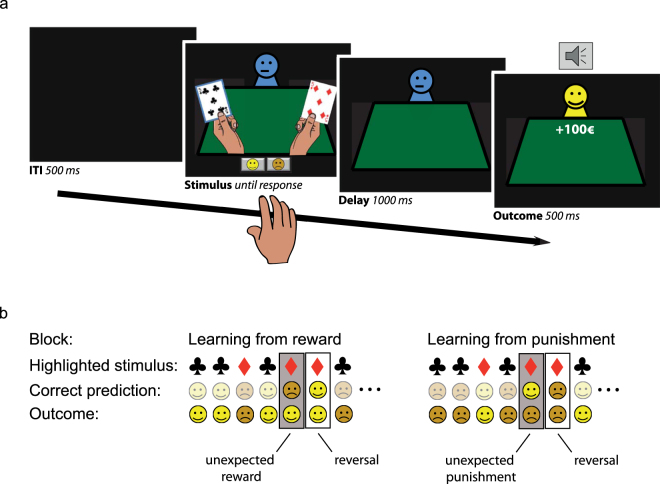Figure 1.
Reversal learning task as was previously used in Janssen et al.28. (a) On each trial, participants were presented with 2 gambling cards. One of the cards was selected by the computer and highlighted with a blue border. Participants then had to predict, with a left or right button press, whether the card would be followed by a reward (a happy emoticon, +100€ sign, and a high-pitch tone) or punishment (a sad emoticon, −100€ sign, and a low-pitch tone). After a short delay, the outcome was presented. (b) An example of a sequence of trials until reversal for both the learning from reward (left) and punishment block (right). The participant learned to predict reward and punishment for the two gambling cards. The card-outcome associations were deterministic, and reversed after 5 to 9 correct responses. Reversals were signaled by either unexpected reward (reward block) or unexpected punishment (punishment block). Performance was measured on reversal trials, immediately after the unexpected outcomes.

